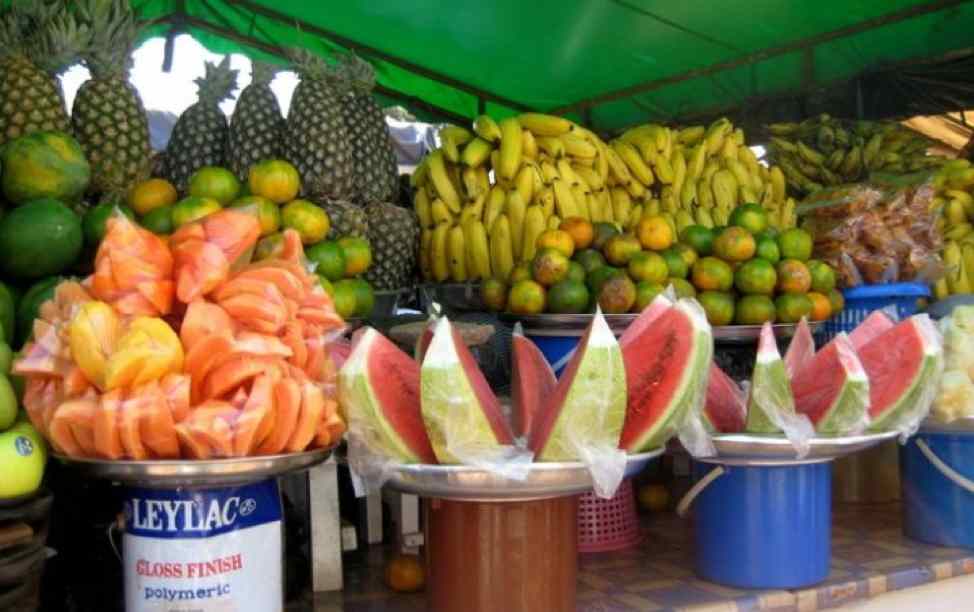List of Local Fruits in Ghana

To get the most out of your nutrition, you should be eating plenty of fruits and vegetables. But when you live in an unfamiliar place, it can be hard to figure out which fruits are popular and which you should avoid altogether.
There are many local fruits in Ghana, and you can find them growing in the wild or being sold at markets throughout the country. In this article, we will be listing some local fruits in Ghana so you get to know the available fruits you can use to improve your diet.
What are fruits
Fruits are an important part of a healthy diet. They are usually high in fiber and vitamins while low in fat and calories.
Are fruits important?
Fruits are important because they provide a wide range of nutrients that we need to stay healthy. They are a great way to get the vitamins and minerals that your body needs.
List of local fruits in Ghana
- African pear
- Tangerine
- Watermelon
- Pear
- Passion fruit
- Soursop
- Lemon
- Apple
- Banana
- Coconut
- Papaya
- Melon
- Pineapple
- Mango
- Noni
- Sisibi
- Guava
- Atemoya
- African Star Fruit
- Grape Fruit
- Cashew
- Avocado
African pear
African pears are native to West African countries and are also known as ube, resembling eggplants. African pears have a pink color when unripe, but turn to a dark purple when they are ready to eat. Unlike other fruit, African pears are often cooked, and are buttery when roasted.
Tangerine
The watermelon fruit has a very hard outer shell that protects the juicy sweet flesh inside. The flesh has a deep red color with seeds scattered throughout it. The watermelon fruit contains vitamin A, C, B6, and potassium.
Watermelon
The watermelon fruit has a very hard outer shell that protects the juicy sweet flesh inside. The flesh has a deep red color with seeds scattered throughout it. The watermelon fruit contains vitamin A, C, B6, and potassium.
Pears
They have a thin layer of skin that can be peeled off to reveal the soft, white fleshy insides. Pears taste sweet and refreshing when eaten raw but they also can be used to make all kinds of dishes like pies, sauces, jams and more!
- Advertisement -
Passion fruit
The passion fruit is a tropical fruit that originated in Brazil and has since spread to many countries. The passion fruit has a unique flavor, which some compare to pineapple or banana. The skin of the fruit is yellow-orange, with black seeds visible through the skin on the inside. When ripe, it may have wrinkles on the surface.
Soursop
Soursop is a very unique tasting fruit. It has an aroma very similar to that of a pineapple, with the taste being a mixture of strawberries and apples, with very mild citrus notes, all while having the creamy texture of a banana.
Lemon
One of the most popular and widely available fruits is a lemon. It is often used to make juice and as a fresh ingredient for many dishes, such as soups and curries. They are also added to drinks such as water, milk, tea or coffee.
Apple
The apple is a deciduous tree native to North America. The fruit we are familiar with today was developed from the wild apple, Malus sieversii, found growing along the Western coast of North America.
It is believed that the first apples were grown on an estate owned by John Chapman who went by the alias Johnny Appleseed. This cultivar became known as John Appleseed.
Banana
Banana is a fruit with a yellow skin and bright-yellow flesh. Bananas grow on plants that are approximately 5 to 7 metres tall and are found in tropical regions.
Oranges
Ghana boasts subtropical climates with both hot summers and fairly mild winters, giving the perfect terrain for the growth of oranges. It is fruit to be enjoyed all year round, and is considered one of the most popular fruits across the world.
Coconut
The coconut palm is an economically important plant and is the tree with the most uses in the world. The fruit, or nut, is used for cooking oil, vinegar, and as a source of food. Coconut water is also a popular drink that can be found on store shelves around the world. It’s safe to say that coconuts are pretty important to us!
Papaya
The papaya is a common fruit in the country. It can be eaten as a whole or cut up to be added to salads and other dishes. The flesh is white, soft, and juicy with an orange-yellowish color.
The skin is dark green when ripe and black when unripe. Papaya trees grow throughout the world, but those grown in Ghana have a strong flavor that distinguishes them from other varieties from places like South America or Southeast Asia.
Melon
Melons are grown in Ghana throughout spring in towards the end of autumn and are often readily available during these times. The large fruit contains seeds which are removed along with the skin, before slicing and enjoying as the perfect fruit snack.
Pineapple
Pineapples are a type of bromeliad, which is a plant that grows on top of other plants. The fruit of the pineapple plant is called ananas and it was named this because the similarity between its shape and the shape of a pine cone with needles. The pineapple can be eaten fresh or processed to become canned or frozen.
Mango
There are many types of mangoes that grow on the same type of tree, but not all are edible. Mangoes can be eaten raw or cooked and they taste sweet when they are ripe or just slightly sour when unripe. Some people also use mangoes to make drinks like a lassi or even make chutney.
Noni
Noni fruit has a very distinctive flavor and taste, often smelling like fermented fruit and having a bitter taste. Noni fruit is not often eaten raw thanks to its not so pleasant flavor, but more commonly it is served in juice form, either sweetened, unsweetened or diluted and mixed with other fruit juices.
Sisibi
Sisibi is a delicately sweet fruit similar to the grape. It comes from the sisibi tree, grown in the rainy season in Ghana. While sisibi fruits look similar to grapes, the difference is that sisibi fruit has seeds with peanut-like bits inside.
Guava
The guava is a very common fruit found in all regions of Ghana. The tree grows to about 20 feet, and bears fruit from the trunk up to branches at the top. This fruit is grown on a number of farms with some being organic and others using pesticides, but the pesticide-treated ones are not as plentiful.
Atemoya
The atemoya would seem a strange fruit to those who aren’t familiar with it. It is a heart-shaped fruit that can grow to weigh up to 5 pounds. With a pale green skin when unripened, the fruit turns a yellow color as it is ready to be eaten.
African Star Fruit
The African star fruit is a citrus fruit that is often seen at markets and can be found on trees throughout the country. The fruit can range from yellow to orange in color and it has a sweet taste. It is often called the starfruit or the carambola because of its shape, but it is not related to either one.
Grapefruit
The grapefruit is a hybrid citrus fruit that is a cross between a sweet orange (Citrus sinensis) and either a pomelo or shaddock (Citrus maxima).
The grapefruit is the only fruit to be developed from the cross. A grapefruit has three genes from its pomelo parent and four genes from its sweet orange parent, so it has six chromosomes.
Cashew
The cashew fruit, which grows in an oval shape, is yellowish green when ripe and contains an edible nut that can be boiled or roasted. When processed correctly, the nut can be sold as raw cashew or as an ingredient for cooking oil, butter, cheese and yogurt.
Avocado
Avocados are a subtropical fruit that grow on trees. The trees can grow up to 10 meters tall and bear fruit in less than two years. It is a good source of Vitamin E, folate, and potassium, as well as other vitamins and minerals.
Conclusion
This list is by no means exhaustive, but it does cover some of the more popular and easily found fruits. If you live in a place where fruit is hard to find or costs more than people can afford, then this list may be helpful for you to explore the available options.


